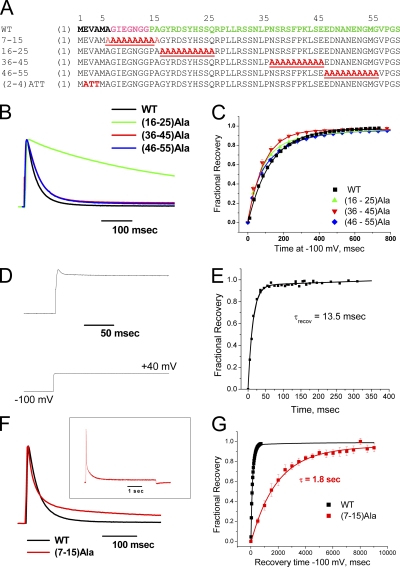XB-IMG-124035
Xenbase Image ID: 124035

|
Figure 3. Scanning mutagenesis identifies regions of the N terminus that are important during different phases of N-type inactivation. (A) Wild-type AKv1 N terminus sequences and sequences of scanning mutants made. (B) Polar region scanning mutations slow inactivation with the largest effect produced by (16–25)Ala. (C) Recovery of polar region mutants from inactivation is only slightly different from wild-type, typically showing a slight acceleration. (D) Latch region mutant EVA(2–4)ATT inactivates rapidly but incompletely, resulting in a large sustained current that is not seen in the wild-type channel. (E) Representative experiment showing that recovery from inactivation for EVA(2–4)ATT is accelerated by ∼10 times compared with wild type, as expected for a destabilized binding to the channel pore. (F) Flex region mutation (7–15)Ala produces a pronounced two-exponential inactivation not seen with other mutations. Inset shows inactivation of (7–15)Ala during a 5-s depolarization to +50 mV, emphasizing the slower inactivation kinetic. (G) Recovery of (7–15)Ala from the N-type–inactivated state is dramatically slowed with a time constant ∼14 times slower than wild type. Image published in: Prince-Carter A and Pfaffinger PJ (2009) © 2009 Prince-Carter and Pfaffinger. Creative Commons Attribution-NonCommercial-ShareAlike license Larger Image Printer Friendly View |
